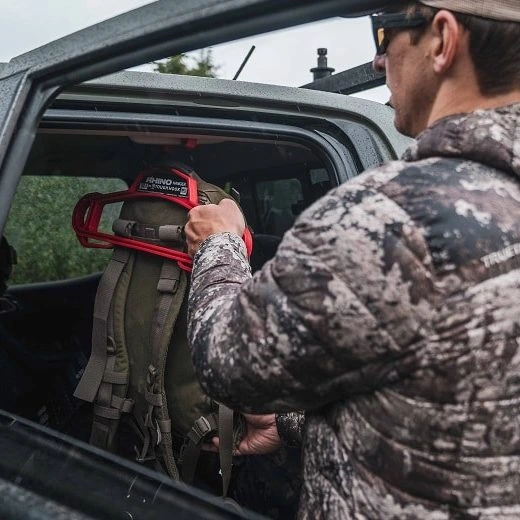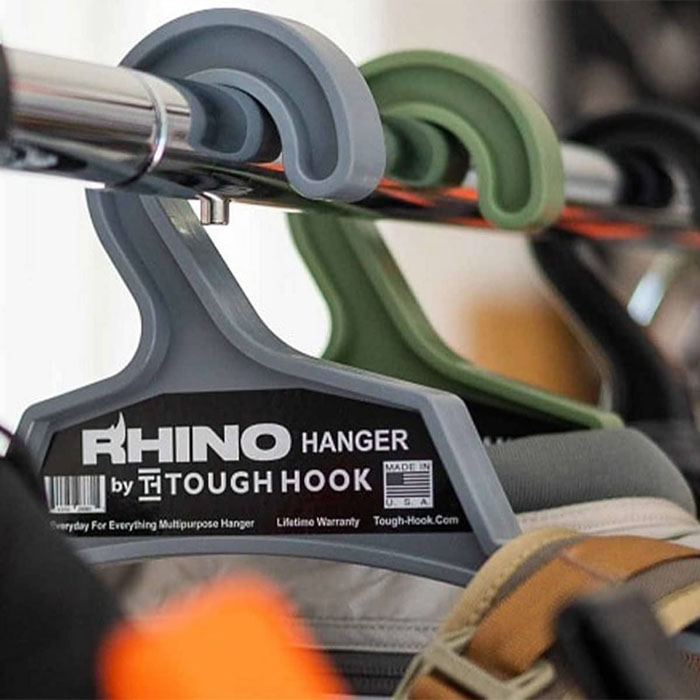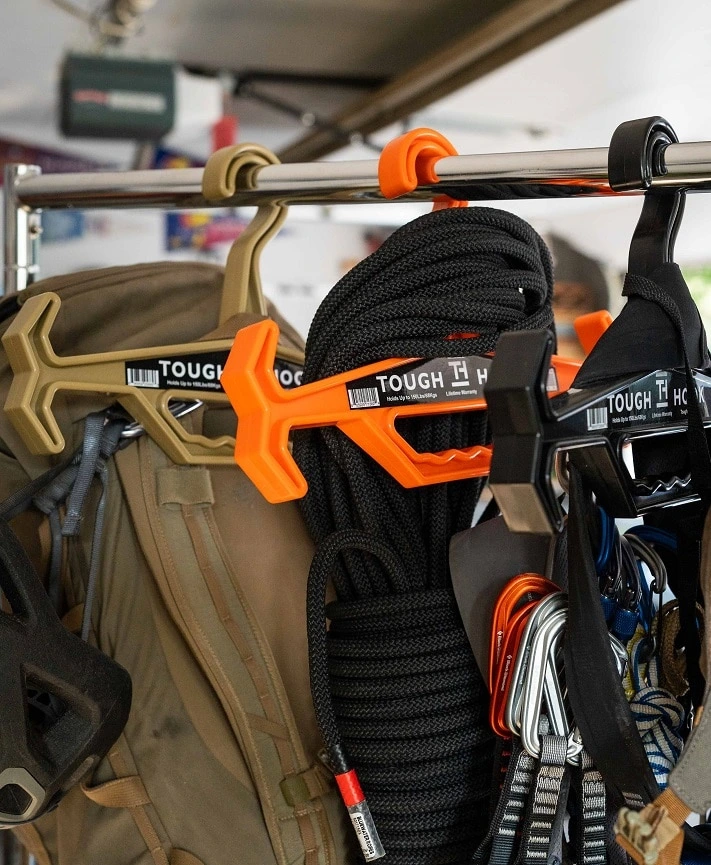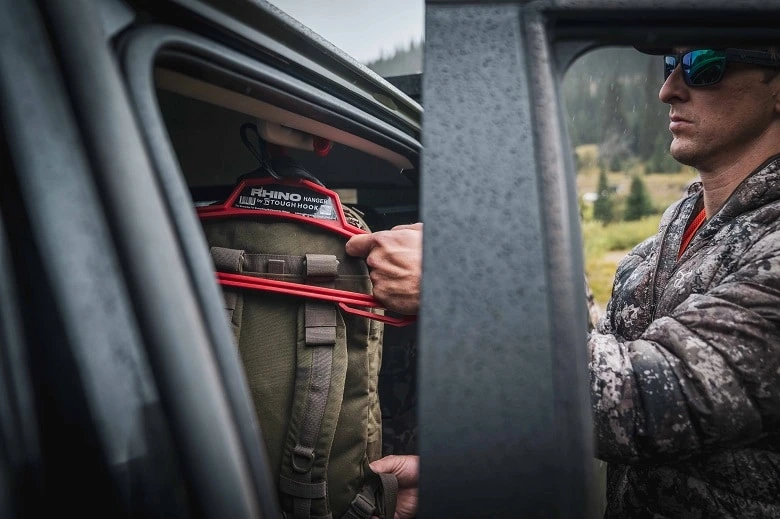For the dedicated soldier, seasoned outdoorsman, or discerning survivalist, your gear is your lifeline. The effectiveness of your mission hinges on the organization and accessibility of your equipment. It’s not just about having high-quality military gear – how you store and organize them could mean the difference between a successful operation or a disastrous one. Let’s march into the world of efficient military gear storage solutions that can ramp up your level of preparedness, maintain the longevity of your precious equipment, and ensure every second counts in crisis scenarios. Taking cue from the expert suggestions and best practices, make cluttered packs and inaccessible equipment a thing of your past!
Our article on “Military Gear Organized: Effective Storage Solutions” offers a variety of tips and strategies for storing and organizing your military gear. From utilizing shelving with secure doors to organizing your tools in counter-height work tables, our article covers a range of solutions to help you optimize your gear storage and avoid inventory nightmares. With these effective strategies, you can ensure your gear is ready when you need it most.
Military Gear Storage Principles
When it comes to storing military gear, there are a few principles that can help ensure efficiency and organization. These principles go beyond simply finding space for equipment; they aim to optimize workflows and enhance readiness.
One important principle is maximizing space utilization. Military bases and facilities often have limited storage areas, so making the most of available space is crucial. This can be achieved through the use of vertical storage solutions, such as shelving units or pallet racks, which allow for the stacking of items and efficient use of overhead space. Additionally, utilizing mobile storage systems that can be compacted when not in use can further optimize available space.

Additionally, implementing an inventory management system is essential for effective military gear storage. This system allows for accurate tracking of equipment, ensuring that everything is accounted for and readily accessible. With advances in technology, inventory management software and barcode scanning systems can simplify this process by automating data entry and providing real-time information on the availability and location of gear.
For instance, imagine soldiers needing to quickly access specific equipment during a mission deployment. With an efficient inventory management system in place, they can easily identify where each item is stored and retrieve it without wasting precious time searching through disorganized spaces.
Lastly, security plays a vital role in military gear storage. To prevent loss or theft, secure storage solutions such as sturdy lockers with robust locking mechanisms should be utilized. Access control measures can also be implemented to ensure that only authorized personnel are able to access sensitive equipment.
By following these military gear storage principles, military facilities can optimize their workflows and ensure efficient equipment management. Through proper space utilization, categorization and labeling, inventory management systems, and enhanced security measures, the entire process of storage becomes streamlined and facilitates rapid retrieval when needed most.
Compartmentalization for Easy Access
An effective method to facilitate easy access to military gear is through compartmentalization. This approach involves dividing storage areas into smaller sections or compartments based on specific criteria such as item type, size, or frequency of use.
By compartmentalizing storage spaces, personnel can easily locate the desired gear without having to search through a jumble of items. For example, different compartments may be designated for uniforms, accessories, medical supplies, or specialized equipment. This method allows for quick identification and accessibility during high-pressure situations where every second counts.
Moreover, compartmentalization can be achieved through various storage solutions such as modular shelving units, drawers with dividers or bins with customizable partitions. These options provide flexibility in adapting storage spaces to different types of gear. Think of it like a toolbox with multiple compartments; each tool has its designated spot so that you can quickly find what you need without searching aimlessly.
Compartmentalization also contributes to the overall protection and preservation of gear. By preventing items from coming into contact with one another, the risk of damage or wear is minimized. Delicate equipment like optics or electronics can be particularly susceptible to scratches or impact if not stored separately.
Additionally, when utilizing compartmentalization in combination with proper labeling and categorization (as discussed in the previous section), it creates a cohesive system that enhances organization and ease of use. Each compartment can be labeled according to its contents or purpose, creating a visual reference guide that assists personnel in locating specific items efficiently.

Inventory Systems for Gear Tracking
In the fast-paced and high-stakes world of the military, keeping track of gear and equipment is crucial for efficient operations. To ensure that no item goes missing and to streamline the process of inventory management, inventory systems for gear tracking play a vital role.
Gone are the days of manually recording and tracking gear using paper-based methods. Today, advanced technology has revolutionized the way military gear is accounted for. Barcode scanning systems, RFID (Radio Frequency Identification) tags, and inventory management software have become indispensable tools in maintaining an accurate inventory.
For instance, imagine a scenario where a special forces unit must rapidly deploy for a mission. Each soldier needs to be equipped with specific gear and weaponry tailored to their role. Without an effective inventory system, it would be difficult to ensure that every soldier has the necessary equipment before heading into high-pressure situations.
These modern inventory systems allow for real-time tracking and visibility, enabling military personnel to quickly locate and retrieve gear when needed. Using barcode scanning or RFID technology, items can be scanned into the system as they enter or exit storage facilities, creating a digital record of their whereabouts.
Additionally, some inventory systems offer features such as automated alerts for low stock levels or expiry dates of perishable items. This proactive approach ensures that supplies are replenished in a timely manner, reducing downtime and enhancing operational readiness.
Now that we understand the importance of gear tracking through inventory systems let’s dive into the essential storage solutions that contribute to efficient organization and preservation of military gear.
Essential Storage Solutions for Military Gear
When it comes to storing military gear, durability, security, and accessibility are paramount. The demands placed on these storage solutions require them to withstand rugged conditions while providing quick access to essential equipment. Let’s explore some essential storage solutions that cater specifically to the unique needs of military organizations.
One such solution is the Tactical Readiness Locker. These lockers are specially designed to house everything from uniforms and boots to helmets, protective gear, and weaponry. Equipped with secure locking mechanisms and compartments tailored to specific items, these lockers ensure that gear is well-organized, protected, and easily accessible when needed.
Another noteworthy storage solution is the Universal Weapons Rack. Designed to securely hold firearms and other weapons, these racks offer customizable configurations to accommodate various types of weaponry. With features like built-in locking mechanisms and adjustable storage capabilities, they provide peace of mind knowing that weapons are stored safely while also enabling quick retrieval when required.
Parachute rigging operations can benefit greatly from specialized storage solutions as well. Parachute Racks and Containers help streamline the process by providing designated spaces for packing materials, chutes, and rigging tools. This ensures efficient organization and increases operational readiness for parachute-based missions.
“With the help of Patterson Pope’s military storage solutions, we have been able to significantly improve our gear organization within our unit. Our soldiers can now quickly access their equipment when needed, which has enhanced our training exercises and overall efficiency in the field.” – Sergeant Johnson
Compact storage systems are another crucial component in military gear organization. These systems optimize space utilization while providing secure storage for a wide range of items such as uniforms, personal protective equipment, ammunition, medical supplies, and more. By compacting items vertically or using innovative shelving designs, these systems save valuable floor space without compromising accessibility or security.
While some may argue that traditional storage methods can still be effective for military gear management, it is important to acknowledge that modern storage solutions have evolved to meet the unique demands of today’s military operations. The trend in military storage solutions is to optimize space-saving while ensuring easy access and security.
As we have explored the various storage solutions designed to meet military needs, it is evident that a strategic approach to gear organization is essential for provisioning millions of people in the military. Reliable access to equipment is crucial for training, service, and new missions. With Patterson Pope’s military storage solutions, military personnel can benefit from durable, secure, and space-saving storage options that enable them to focus on their mission at hand.
Using Spacesaver Solutions
When it comes to organizing and efficiently storing military gear, Spacesaver offers a range of innovative solutions that have proven to be highly effective. With their extensive experience in military storage, Spacesaver understands the unique challenges faced by armed forces in maintaining and accessing equipment. Their solutions are designed to streamline processes, maximize limited storage space, and enhance overall efficiency.
One key consideration for military gear storage is increasing capacity. Spacesaver’s solutions provide optimized storage configurations that make the most of available space. From weapon storage to warehouse and CIF storage, their configurable solutions ensure that every inch of space is utilized effectively. By utilizing high-density racks, specialized shelving systems, and modular drawer cabinets, Spacesaver enables personnel to store more equipment in less space.
Another critical aspect of military gear storage is simplifying inventory counts and ensuring gear accountability. Spacesaver’s solutions include features like barcode scanning technology and RFID tagging systems, which facilitate accurate tracking and monitoring of equipment inventory. This not only saves time but also reduces the chances of misplaced or lost gear.
For instance, imagine a large armory with numerous rifles stored in traditional racks. It could take hours for personnel to manually count and record each rifle during an inventory check. However, with Spacesaver’s automated tracking system using RFID tags, personnel can quickly scan the rifles’ tags using handheld scanners, instantly updating the inventory database with precise information.
Security is another crucial consideration when storing military gear. Spacesaver provides solutions that ensure weapons and optics are securely stored and protected from unauthorized access or damage. Their weapon racks are designed with advanced locking mechanisms and secure compartments to safeguard firearms during both everyday operations and transport.
Furthermore, when it’s time for rapid deployment, Spacesaver’s deployable solutions offer immense convenience by allowing items to be stored in the same containers they are deployed in. This eliminates the need for repacking and unpacking, saving valuable time during deployment preparations.
Spacesaver’s deployable solutions include the Universal Weapons Rack, designed to secure any type of weapon with optics zeroed throughout transport. The Universal Expeditionary Weapons Storage System helps mobilize an arms room quickly, while the Rapid Readiness Box is perfect for shipping military supplies. Additionally, the Mobility Crate provides a reliable solution for storing and transporting UTVs and other equipment.
By integrating Spacesaver’s storage solutions into military organizations, personnel can have a system in place that enhances property accountability. This not only saves time but also ensures accuracy and helps avoid FLIPLs (Financial Liability Investigation of Property Loss). With Spacesaver’s expertise in military storage solutions, armed forces can achieve efficient and effective gear storage operations.
While Spacesaver offers comprehensive storage solutions tailored specifically for military needs, there are also other popular options worth considering. Let’s explore some of these alternatives.
Other Popular Storage Options
In addition to Spacesaver solutions, there are other options available when it comes to efficiently organizing and storing military gear. One such option is Lyon, a company known for its range of military storage solutions.
Lyon offers a variety of products designed to meet different storage needs within the military. Their gear lockers, such as the TA-50 gear locker, are specifically built to handle military-grade equipment. These lockers feature diamond perforations for airflow, a 3-point latching system for added security, and options for hanging uniforms and storing other items.
For pilot flight gear storage, Lyon provides the Command gear locker. This locker has open storage areas to accommodate bulky gear like flight suits or helmets, along with separate locking compartments for personal items. The Command gear locker can also be customized with squad colors for added personalization.

Additionally, Lyon offers modular drawer cabinets that are versatile storage solutions for organizing tools or parts. These cabinets come in different sizes and can be locked for added security. Each drawer is capable of holding up to 400 lbs, making them suitable for storing heavy equipment.
If you’re considering these alternatives, Lyon can provide personalized quotes based on your specific storage needs and requirements. Their range of products offers additional choices for organizing military gear effectively.
Principles for Efficiently Packing and Unpacking Equipment
Efficiently packing and unpacking military gear is essential for any service member. It not only saves time and energy but also ensures that all necessary equipment is readily available when needed. To achieve this, it’s crucial to follow a few key principles that promote organization and ease of access.
First and foremost, prioritize categorization. Sort your equipment into logical groups based on functionality, size, or frequency of use. For example, you might have categories for weapons, clothing, communication devices, tools, or medical supplies. By organizing items into distinct groups, you’ll create a systematic approach to packing and unpacking.
Let’s say you’re a field medic. Categorizing your gear would involve separating medical supplies such as bandages, medications, and instruments from other types of equipment like clothing or communication devices.
Once you’ve established categories, the next principle to consider is proper labeling. Clearly label containers or bags with the contents they hold to make identification quick and easy. This step is particularly crucial when working in a team or storing gear in shared spaces where others may need to access it.
Imagine being deployed in an unfamiliar location and needing to locate specific equipment quickly. Properly labeled containers would enable you to find precisely what you need without rummaging through multiple items.
Another essential principle for efficient packing and unpacking is maximizing space utilization. Military gear often comes with various shapes and sizes that can be challenging to fit together neatly. Optimize space by using techniques such as rolling clothes instead of folding them or utilizing vacuum-sealed storage bags for bulky items.
Think of it like packing a puzzle; finding creative ways to arrange the pieces efficiently will maximize the available space.
Additionally, maintaining an inventory plays a vital role in organizing military gear. Keep track of the items you pack, making note of serial numbers, sizes, or other relevant details. This record will not only assist with accountability but also aid in identifying missing or misplaced gear during unpacking.
“By staying disciplined with my inventory list, I was able to quickly identify and locate a missing piece of equipment that my team needed for an important mission,” recalled Staff Sergeant Johnson.
Now that we’ve explored the principles for efficiently packing and unpacking military gear, let’s shift our focus to considering long-term storage solutions.
- Efficiently packing and unpacking military gear requires categorization, proper labeling, maximizing space utilization, and maintaining an inventory. These principles promote organization and ease of access to ensure that all necessary equipment is readily available when needed. Additionally, for long-term storage solutions, it’s crucial to consider factors such as climate control, security, and accessibility to ensure gear remains in top condition and easily retrievable.
Considering Long-Term Storage Solutions for Military Gear
For military personnel, having access to reliable long-term storage solutions is crucial. Whether it’s due to deployment, relocation, or transitioning between assignments, there are times when storing gear becomes necessary. When considering long-term storage options for military gear, several factors should be taken into account to ensure the safety and preservation of equipment.
One important aspect to consider is security. Military gear often includes valuable and sensitive equipment that must be protected from theft or unauthorized access. Look for storage facilities that offer robust security measures such as surveillance cameras, controlled access systems, and on-site staff presence.
In addition to security, climate control is another essential factor when storing military gear long-term. Extreme temperatures or humidity levels can damage equipment like firearms, electronics, or delicate fabrics. Opt for storage units that provide climate-controlled environments to safeguard your gear against these environmental hazards.
A Marine Corps veteran shared how he stored his uniforms in a standard storage unit while deployed overseas. Unfortunately, the high humidity caused mold growth on his uniforms, resulting in irreparable damage.
Moreover, accessibility is vital when considering long-term storage for military gear. Look for facilities that offer extended access hours or 24-hour availability so you can retrieve your equipment whenever necessary without restrictions. This flexible accessibility ensures that you have the freedom to retrieve or store gear according to your operational needs.
Lastly, insurance coverage is an important aspect to consider for long-term storage. Although military gear is typically issued by the government and may have limited personal liability coverage, it’s essential to explore additional insurance options to ensure complete protection against loss or damage. Some storage facilities offer insurance coverage specifically tailored for military personnel, providing added peace of mind.
Now that we’ve explored the major considerations when storing military gear long-term, you can make informed decisions about which storage solutions best suit your needs.


